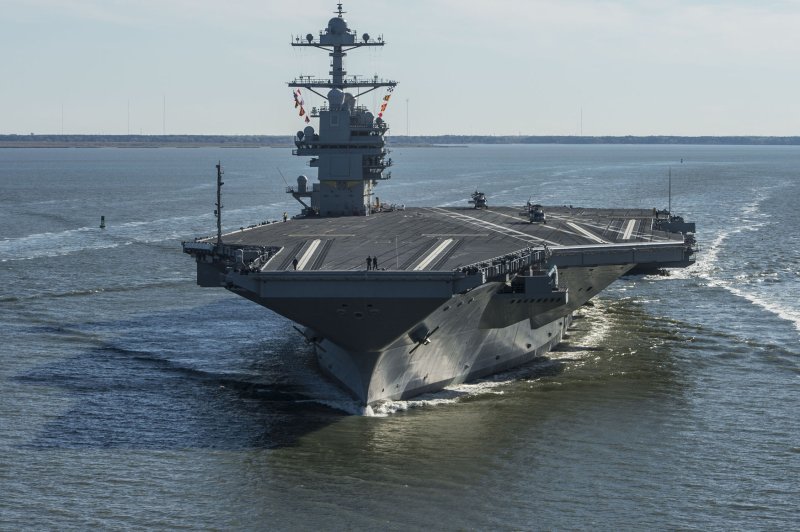The future USS Gerald R. Ford sails on its own power for the first time out of Newport News, Virginia on April 8, 2017. Photo by Mass Communication Specialist 2nd Class Ridge Leoni/U.S. Navy
|
License Photo
June 13 (UPI) -- Huntington Ingalls was awarded a five-year $687 million contract for early service life period work on the first-in-class aircraft carrier USS Gerald R. Ford, which is undergoing sea trials after years of delays and cost overruns.
The contract, announced by the Department of Defense on Wednesday, includes five ordering periods for support of ship repair and modernization. The services include continuous incremental and planned incremental availabilities, full-ship shock trials, and continuous and emergent maintenance during the early service life period
Work on the initial delivery order will be performed at the company's shipyard in Newport News, Va., and is expected to be completed by June 2020.
Naval fiscal 2019 operation and maintenance in the amount of $1.8 million will be obligated at time of award and will expire at the end of the current fiscal year. Work under all five delivery orders is expected to be completed by June 2024.
The nuclear-powered Ford, designated CVN 78, is the first new aircraft carrier designed in more than 40 years, and will replace the Nimitz-class ships.
The Navy plans to spend $43 billion on the three new ships in the class, including the Ford, the future USS John F. Kennedy and the future USS Enterprise, according to the U.S. Navy.
The Ford was formally commissioned into the Navy on July 22, 2017, is scheduled to be delivered in mid-October and deployed around 2020.
Last week, Raytheon announced the ship's integrated combat management system completed its final developmental test off the coast of California. Raytheon announced a U.S. Navy unmanned self-defense test ship simulated a scenario the Ford may encounter once deployed.
The Ford class includes significant quality-of-life improvements and reduced maintenance, as well as improve operational availability and capability compared with Nimitz-class carriers, according to the Navy.
The Navy and manufacturers have had difficulties with the advanced weapons elevators, none of which were functioning after christening. The new elevators are run with electromagnetic, linear synchronous motors, which allows for greater capacities and a faster movement of weapons than the Nimitz-class carrier elevators that utilize cables.
The Navy also is dealing with a propulsion problem. During trials one year ago, the situation caused Ford to return to port ahead of its scheduled post shakedown. The ship's main turbine generators are driven by the steam produced by Ford's two nuclear reactors.















